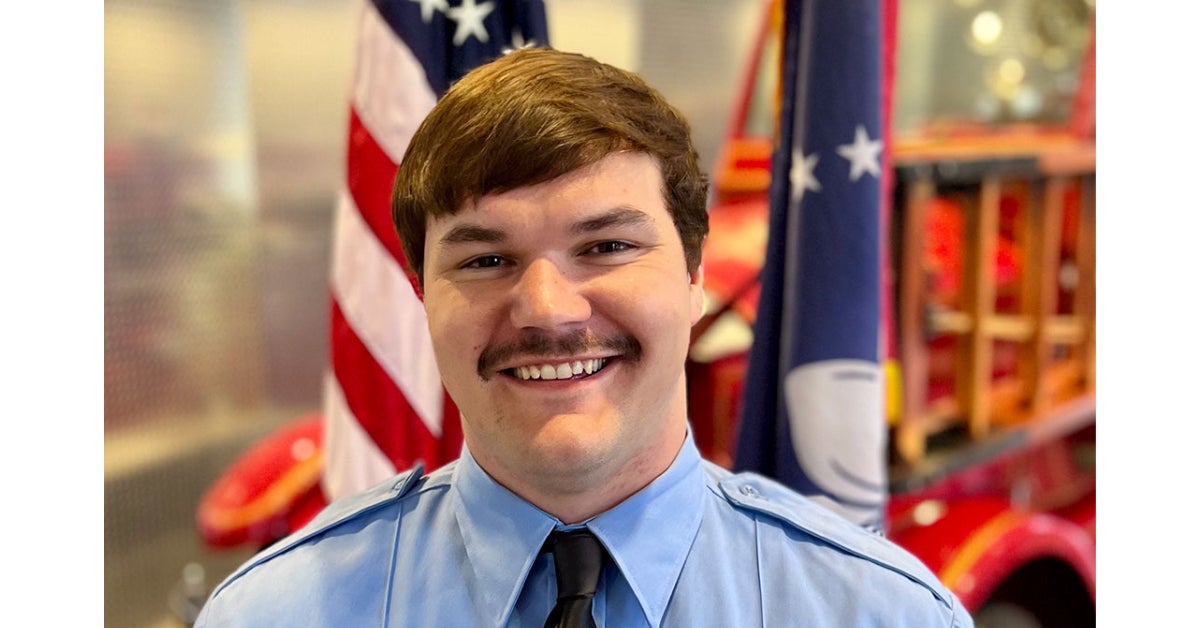From weevil chasing to world’s No. 2 passenger airline: Delta Air Lines roots are traced to Tallulah field
Published 12:00 am Monday, November 29, 2004
Steve Gustafson owner of Ag-Aero Inc. which operates out of Scott Field stands outside the old Standard Oil Company refilling station that the old Delta Airlines cropdusters once used, while behind him his daughter nine-year-old Ashlyn Gustafson explores the old building. (Jon GiffinThe Vicksburg Post)
[11/28/04]TALLULAH Delta Air Lines, now the world’s second-largest passenger airline, traces its roots to the days when cropdusters where called on to fight boll weevils.
No one knows the story better, or is more closely tied to the story, than Warren Patrick of Tallulah.
His father was one of the original pilots in the crop-dusting experiment from which Delta grew, and the airport the dusters used was on his mother’s family’s land.
Delta, named for the Mississippi River delta areas where its planes first flew, is celebrating its 75th anniversary this year.
The boll weevil which was destroying cotton crops brought Patrick’s father, a pilot in the U.S. Army Air Corps, to the U.S. Government Experiment Station that opened in Tallulah in 1909.
Scott Airport, on 100 acres about five miles east of Tallulah, was developed as a base for Air Corps pilots to test application of pesticides from the air an entirely new idea. The airport building was built by Standard Oil Company in 1923 and is listed on the National Register of Historic Places.
Dr. Bert R. Coad, a noted entomologist, was sent to the experiment station to direct the test against the pest in 1916, according to notes kept by Madison Parish Historical Society member John Earl Martin. Helping in the fight was C.E. Woolman, then the parish’s agricultural extension agent.
“Both these men were intrigued with airplanes, Mr. Woolman having gotten his first ride in 1910, seven years after Kitty Hawk,” Martin wrote, referring to the flight by Wilbur and Orville Wright at Kitty Hawk, N.C.
Boll weevils had entered the parish in 1907 and, by the next year, had destroyed about 40 percent of its cotton output, Martin wrote.
After Coad learned of experiments using U.S. Army Air Corps planes to apply a chemical to fight the sphinx moth on catalpa trees in Ohio, he asked for and received Air Corps help to try similar experiments against the weevils.
The station, which closed in 1973, employed about 100 people. It was “in some respects the only one of its kind; and in any case is believed to be the largest of its kind in the country,” parish resident William M. Murphy wrote in 1927.
“He was one of two pilots they sent to Tallulah to experiment with aerial crop-dusting,” Patrick said of his father, John B. Patrick, who he said retired as a colonel in the Air Corps.
Scott Airport became the first municipal airport in Louisiana and was state-of-the-art for its time, Martin wrote. The Army also used the airport as a refueling stop on the route between air bases near San Antonio, Texas, and Montgomery, Ala., Patrick said.
A 1923 refueling stop in Tallulah by an airplane-manufacturing executive led to a key meeting.
“George B. Post, vice president of Huff Daland Airplanes of Ogdensburg, N.Y., landed his airplane in Tallulah en route to a business meeting in Texas,” an article in Delta’s Sky magazine on the airline’s 50th anniversary said. “Upon meeting Coad and Woolman, he became intrigued by the dusting experiment and saw it as a possible new market for selling airplanes, which, until that time, were primarily used by the military.”
On Post’s initiative, Huff Daland began manufacturing cropdusting planes. It formed a separate division, Huff Daland Dusters, that was first based in Macon, Ga. The division was soon moved to Monroe, La., where Woolman took over as field manager.
Under Woolman the business succeeded, and he expanded it to Peru, in South America, to take advantage of the reversed seasons there.
“In 1928, Woolman returned to Monroe from Peru, only to find a representative from the New York office trying to sell the dusting division to bail the parent company out of financial trouble,” the Sky article said. “Recognizing that the crop-dusting business made a substantial contribution to the community, a group of Monroe businessmen joined with Woolman and bought out the Huff Daland interest.”
It was then that the company was renamed “Delta Air Service.”
The company “inaugurated its first U.S. passenger service on June 17, 1929, with five-passenger Travel Air’ airplanes,” Sky said. Its first passenger flight was between Dallas and Jackson with stops in Shreveport and Monroe.
The route was extended in June 1930 to Atlanta, which was already the South’s fastest-growing city and is known worldwide as Delta’s key hub.
Coad joined the company as chief entomologist in 1931 and ran its cropdusting operation until it was discontinued 35 years later.
Woolman became president of the company, and its name was changed to Delta Air Lines in 1945.
Delta discontinued its cropdusting operation in 1966, the year Woolman died. Coad also died in the late 1960s.
Today Scott Airport remains an agricultural-flying center, as the home of Ag-Aero Inc., a cropdusting business owned by pilot Steve Gustafson. The Louisiana State government funded renovations to the field’s 3,000-foot runway in about 1998, he said.
“This airport is very, very important to this farming community,” Gustafson said, adding that his company’s planes operate within about a 25-mile radius of the field.
Delta Air Lines now flies to 211 domestic and 51 international cities in 33 other countries.





